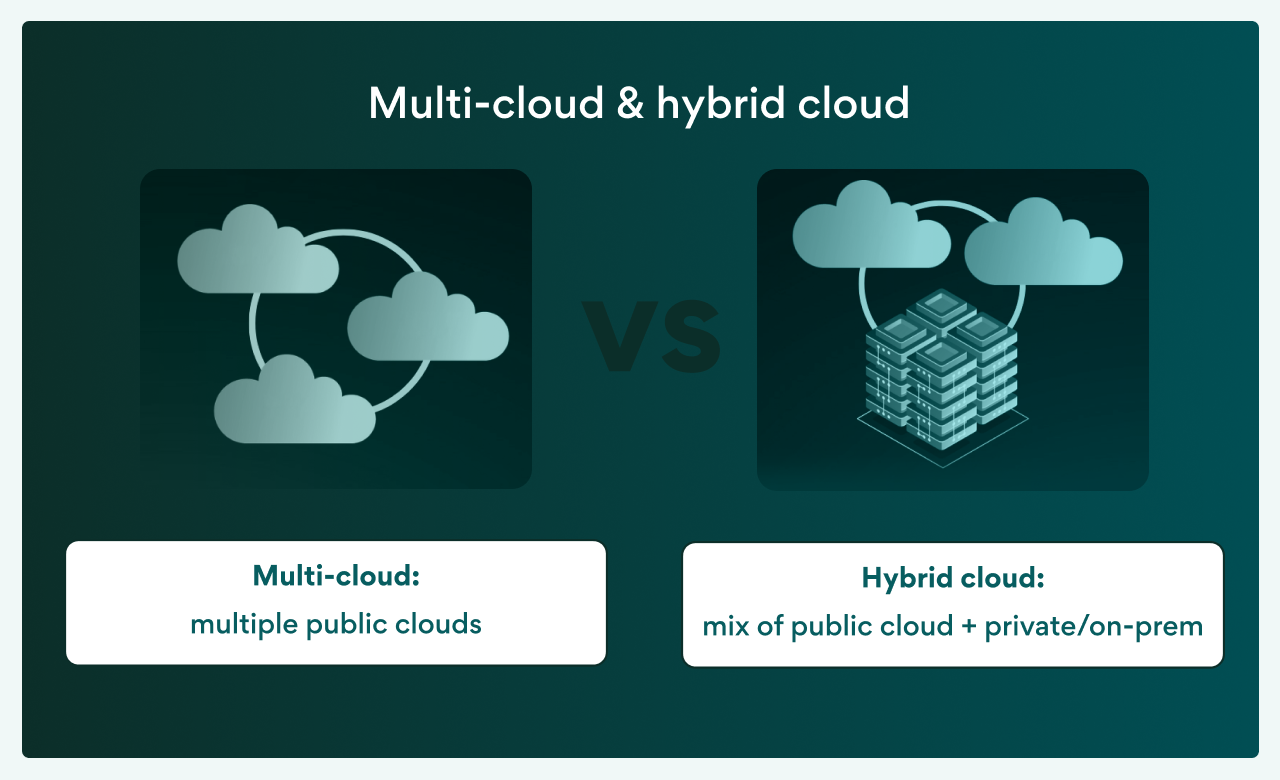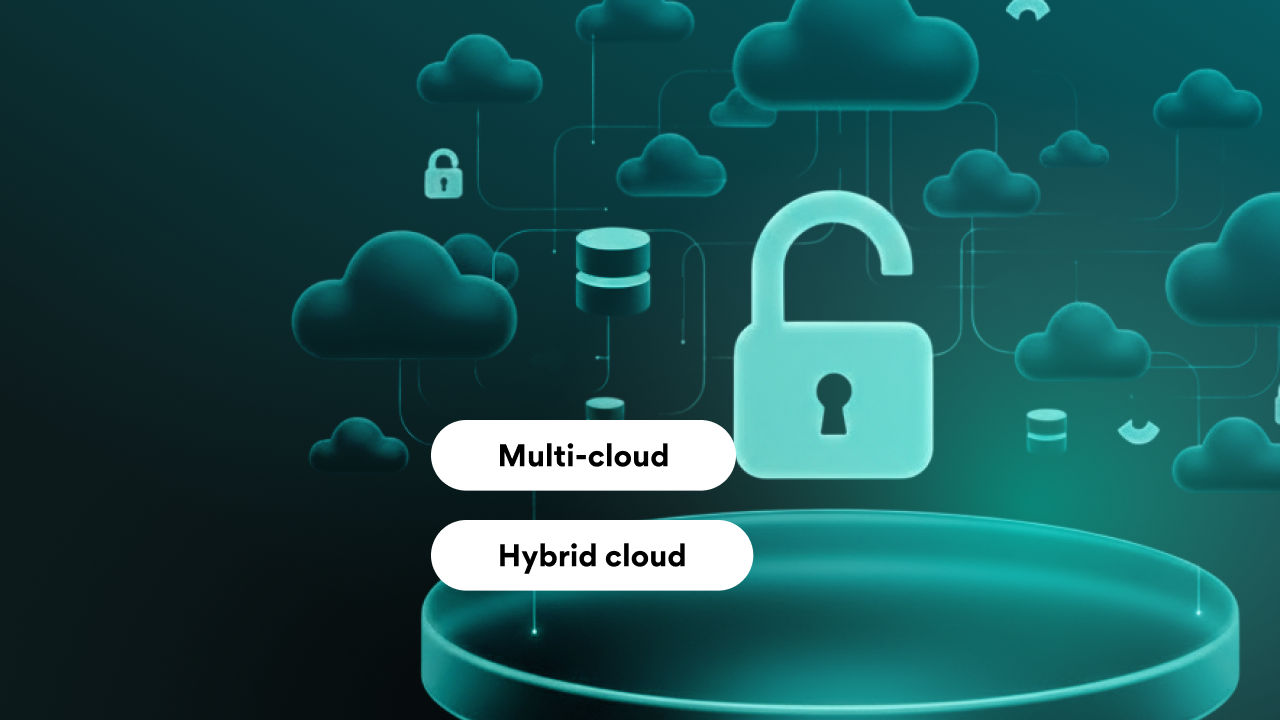



Vendor lock-in happens when a company relies so heavily on one cloud provider’s services and tools that moving away becomes slow, costly, or even impractical. It’s not just about where your data is stored. It’s how your applications are built, how your workflows run, and how your teams operate day-to-day. The deeper you integrate with a provider’s proprietary features, the harder it becomes to change direction when an outage occurs.
Cloud providers often make it easy to get started, but over time, organizations may rely on unique APIs, managed services, or data formats that don’t easily transfer elsewhere. As a result, migrating workloads or integrating new platforms becomes complex and time-consuming.
The risks go beyond inconvenience. Lock-in limits flexibility and innovation. If your chosen provider raises prices or experiences an outage, your options are suddenly constrained. In some cases, it can impact business continuity.
Avoiding vendor lock-in isn’t about abandoning convenience. It’s about building a cloud strategy that gives you freedom to adapt. By prioritizing interoperability and portable architectures, you ensure that it’s your organization that stays in control — not your provider.
In October 2025, the US-East-1 region of AWS suffered a severe outage that knocked out services for major platforms. It was a stark reminder: even the largest cloud provider isn’t immune to failures. If your infrastructure sits solely on one provider, you might be left scrambling. That’s why having a strong multi-cloud or hybrid cloud strategy is more important than ever. In this guide, we’ll explore best practices to help you achieve cloud freedom in 2026 and beyond.
The terms multi-cloud and hybrid cloud are often used interchangeably but they describe two distinct strategies for deploying and managing cloud environments.

Multi-cloud simply means running workloads across more than one public cloud provider. Instead of relying on a single platform, organizations spread workloads across services like AWS, Google Cloud, and Azure. This approach helps avoid vendor lock-in, adds flexibility, and lets teams use the strengths of each provider—for example, AWS for large-scale compute, Azure for enterprise integration, and Google Cloud for AI and analytics. Multi-cloud setups reduce dependence on a single vendor, but they also introduce challenges in governance, interoperability, and cost management.
Hybrid cloud, on the other hand, combines public and private environments (such as on-premises data centers, private clouds, and one or more public clouds) into a unified system. This approach lets organizations run sensitive or legacy systems in their own private environments, while still taking advantage of the scalability and new capabilities available in the public cloud. Hybrid architectures are especially useful for regulated industries or businesses transitioning gradually to the cloud.
In short:
Both approaches can complement each other. Many modern enterprises adopt a hybrid multi-cloud model — blending the control of private infrastructure with the flexibility of multiple public providers. The key is designing these environments to work together seamlessly, with consistent security, governance, and performance monitoring.

In October 2025, the US-East-1 region of AWS suffered a severe outage that knocked out services for major platforms. It was a stark reminder: even the largest cloud provider isn’t immune to failures. If your infrastructure sits solely on one provider, you might be left scrambling. That’s why having a strong multi-cloud or hybrid cloud strategy is more important than ever. In this guide, we’ll explore best practices to help you achieve cloud freedom in 2026 and beyond.
Vendor lock-in happens when a company relies so heavily on one cloud provider’s services and tools that moving away becomes slow, costly, or even impractical. It’s not just about where your data is stored. It’s how your applications are built, how your workflows run, and how your teams operate day-to-day. The deeper you integrate with a provider’s proprietary features, the harder it becomes to change direction when an outage occurs.
Cloud providers often make it easy to get started, but over time, organizations may rely on unique APIs, managed services, or data formats that don’t easily transfer elsewhere. As a result, migrating workloads or integrating new platforms becomes complex and time-consuming.
The risks go beyond inconvenience. Lock-in limits flexibility and innovation. If your chosen provider raises prices or experiences an outage, your options are suddenly constrained. In some cases, it can impact business continuity.
Avoiding vendor lock-in isn’t about abandoning convenience. It’s about building a cloud strategy that gives you freedom to adapt. By prioritizing interoperability and portable architectures, you ensure that it’s your organization that stays in control — not your provider.
The terms multi-cloud and hybrid cloud are often used interchangeably but they describe two distinct strategies for deploying and managing cloud environments.

Multi-cloud simply means running workloads across more than one public cloud provider. Instead of relying on a single platform, organizations spread workloads across services like AWS, Google Cloud, and Azure. This approach helps avoid vendor lock-in, adds flexibility, and lets teams use the strengths of each provider—for example, AWS for large-scale compute, Azure for enterprise integration, and Google Cloud for AI and analytics. Multi-cloud setups reduce dependence on a single vendor, but they also introduce challenges in governance, interoperability, and cost management.
Hybrid cloud, on the other hand, combines public and private environments (such as on-premises data centers, private clouds, and one or more public clouds) into a unified system. This approach lets organizations run sensitive or legacy systems in their own private environments, while still taking advantage of the scalability and new capabilities available in the public cloud. Hybrid architectures are especially useful for regulated industries or businesses transitioning gradually to the cloud.
In short:
Both approaches can complement each other. Many modern enterprises adopt a hybrid multi-cloud model — blending the control of private infrastructure with the flexibility of multiple public providers. The key is designing these environments to work together seamlessly, with consistent security, governance, and performance monitoring.
Avoiding vendor lock-in isn’t about shying away from cloud services. It’s about keeping your options open. With the right architectural choices, you can stay flexible and reduce risk without major disruption.
Build applications and infrastructure that can move easily between cloud environments. Use Docker, Kubernetes, and IaC tools like Terraform or Pulumi to keep deployments consistent across clouds. The less your workloads rely on proprietary services, the easier it becomes to pivot and adapt when needed.
Choose open-source databases, messaging systems, and monitoring tools that are supported across providers. Frameworks like Kubernetes, OpenShift, and Cloud Foundry help ensure your workloads remain portable without tying you to one vendor’s ecosystem.
Create an abstraction layer between your applications and cloud-specific APIs. Tools such as Crossplane or Anthos let teams manage multi-cloud environments from a unified control plane, reducing the need to rewrite code when switching providers.
Data is often the hardest part to move. Store it in formats that aren’t proprietary (e.g., Parquet, Avro, CSV) and use platforms that support open protocols like S3-compatible storage. Regularly test data export and migration processes to ensure you can move without friction.
Establish policies that apply consistently across all environments — public, private, or edge. Use identity federation and centralized policy management (such as Azure AD, Okta, or HashiCorp Vault) to maintain control and visibility without being locked into one provider’s security model.
Use observability tools that can track performance, usage, and cost across multiple platforms. FinOps practices like cost allocation, rightsizing, and budgeting ensure that flexibility doesn’t lead to overspend. Platforms like Datadog, Grafana Cloud, or CloudHealth can help.
Review your architecture regularly to identify where vendor-specific tools have crept in. Build a “dependency map” and track how much effort it would take to migrate each component. This proactive approach helps you prevent accidental lock-in before it becomes a problem.
Cloud needs are changing fast, and flexibility is essential. The recent AWS outage showed the risks of depending on only one provider. By embracing multi-cloud and hybrid cloud models, organizations can reduce dependency, increase resilience, and stay in control of their data and costs.
Looking to reassess your cloud strategy or build a more flexible multi-cloud architecture? ALLSTARSIT can help. We source and hire top cloud engineers who can design, implement, and support scalable environments that keep you in control—not your vendors. Fill out the form and we’ll get back to you shortly.
In October 2025, the US-East-1 region of AWS suffered a severe outage that knocked out services for major platforms. It was a stark reminder: even the largest cloud provider isn’t immune to failures. If your infrastructure sits solely on one provider, you might be left scrambling. That’s why having a strong multi-cloud or hybrid cloud strategy is more important than ever. In this guide, we’ll explore best practices to help you achieve cloud freedom in 2026 and beyond.